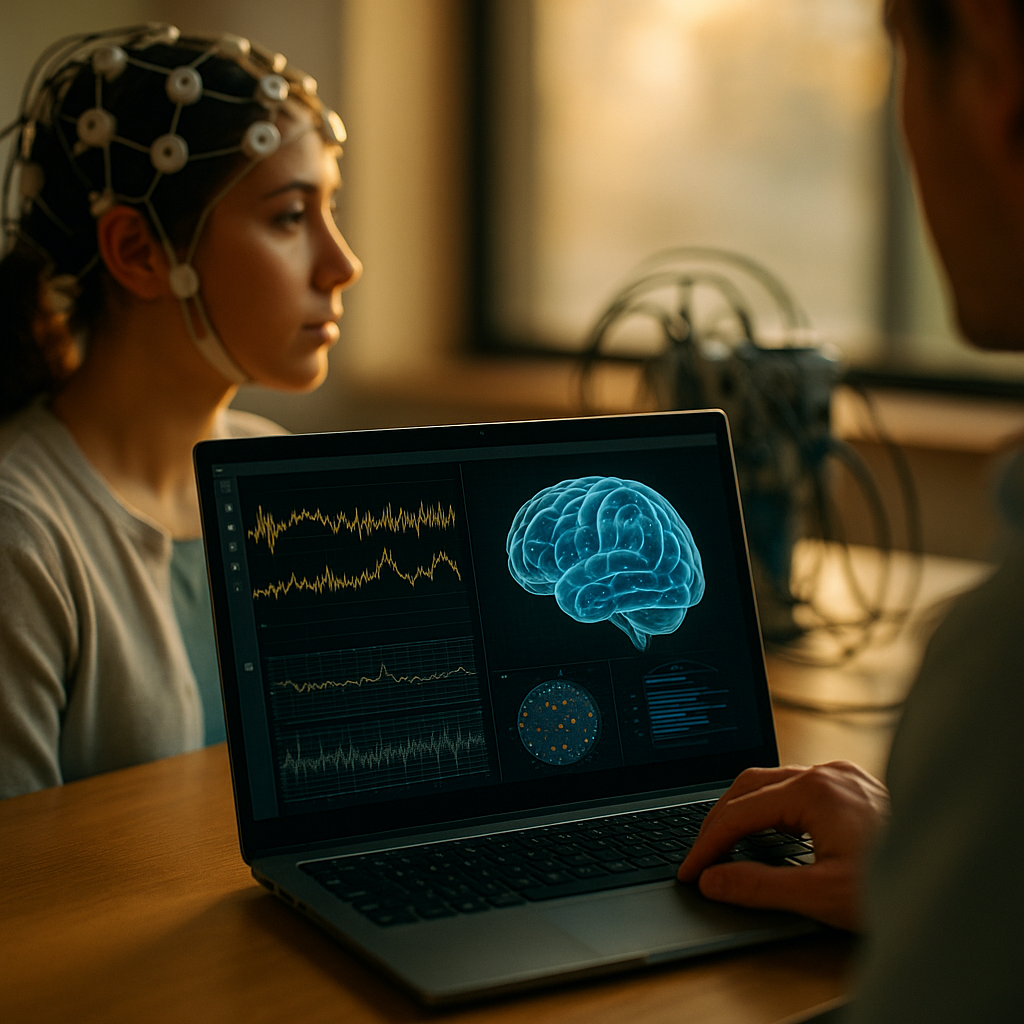Cognitive Load Analysis is revolutionizing how organizations measure audience attention and burnout in 2025. By harnessing AI-powered insights, companies can foster deeper engagement while minimizing fatigue. Explore how Cognitive Load Analysis and advanced AI tools are shaping smarter, healthier interactions—and discover what this means for the future of digital experiences.
Understanding Cognitive Load: The Science Behind Burnout Detection
Cognitive load refers to the mental effort used to process information. When individuals are exposed to excessive content or complex stimuli, their cognitive resources become overwhelmed—resulting in reduced attention span, poor retention, and, ultimately, burnout. In an era where digital content is omnipresent, recognizing and managing cognitive load is crucial for educators, marketers, and product designers alike.
Emerging research in neuropsychology and human-computer interaction highlights how chronic cognitive overload leads to disengagement. Symptoms include diminished focus, lower productivity, and emotional exhaustion. Studies published in 2025 emphasize the significance of early detection and proactive intervention, especially in remote work and e-learning environments. Understanding this science is the first step toward meaningful prevention.
AI Monitoring Tools: Advancements in Audience Attention Measurement
Recent breakthroughs in artificial intelligence have made it possible to dynamically monitor and analyze audience attention. Real-time feedback systems leverage machine learning algorithms, computer vision, and biometric sensors to gauge user engagement. These tools interpret behaviors such as eye tracking, mouse movement, facial micro-expressions, and even tone of voice during live sessions.
Top AI solutions in 2025 offer integrated dashboards that present actionable insights, including:
- Drop-off points in video or webinar content
- Heatmaps of most-engaged website sections
- Patterns of multitasking or distraction
- Physical indicators of fatigue, like yawning or gaze aversion
By combining these signals, organizations can pinpoint moments of disengagement and refine their strategies in real time.
Preventing Digital Burnout: AI-Powered Strategies That Work
Digital burnout is now recognized as a significant barrier to workforce and student wellbeing. AI-driven burnout prevention hinges on actionable Cognitive Load Analysis. Automated systems identify early warning signs and suggest interventions personalized to each user’s needs.
Effective strategies include:
- Adaptive Content Delivery: AI segments complex topics into manageable segments, avoiding information overload.
- Pacing Recommendations: Intelligent timers prompt breaks or transitions to reduce sustained cognitive pressure.
- Emotion Recognition: Emotional AI tools gently intervene when signs of frustration or exhaustion appear.
These innovations help organizations boost satisfaction and retention while prioritizing mental health.
Enhancing User Engagement: Applying Cognitive Load Analysis to Design
Modern interface and content designers apply Cognitive Load Analysis to create environments that maximize user engagement. Leveraging AI insights, teams test different layouts, color schemes, and interactive elements to minimize mental strain.
Examples of high-impact applications include:
- Learning platforms that dynamically adjust quiz difficulty based on real-time attention metrics
- Webinars that offer interactive polls and microbreaks as soon as viewer focus wanes
- Corporate training tools that surface concise summaries when cognitive load rises
By continuously refining experiences with AI, designers maintain high engagement while respecting natural human attention limits.
Privacy and Ethical Considerations in AI-Based Attention Analysis
As organizations collect richer data to analyze attention and burnout, responsible stewardship is essential. Strict adherence to data privacy laws—such as the latest GDPR guidelines—ensures user trust. Reputable AI vendors in 2025 prioritize anonymization, secure data storage, and transparent opt-in policies.
Ethical Cognitive Load Analysis means:
- Never using AI insights for punitive decision-making
- Offering participants clear ways to access, correct, or delete their data
- Fostering transparency about how attention and burnout data influence organizational decisions
Upholding these principles protects both user autonomy and organizational integrity.
The Future of Cognitive Load Analysis: Trends and Opportunities in 2025
Looking ahead, Cognitive Load Analysis powered by AI promises even greater personalization. Leading-edge research explores the fusion of advanced biosensors, natural language processing, and virtual reality. In 2025, watch for these emerging trends:
- Fully immersive learning environments that adapt to mental fatigue in real time
- Holistic well-being dashboards—bridging cognitive load insights with emotional and physical wellness indicators
- AI-driven recommendations for managers and educators to optimize schedules and workflows
Organizations that embrace these opportunities will set new standards in engagement, productivity, and wellness.
FAQs: Cognitive Load Analysis, AI, and Audience Wellbeing
-
What is Cognitive Load Analysis?
Cognitive Load Analysis refers to measuring and understanding the mental effort people expend when processing information. AI tools can now assess this in real time, helping organizations manage attention and prevent burnout.
-
How does AI measure attention and burnout?
AI systems use data such as eye movements, user interaction patterns, and biometric signals to gauge engagement and detect early signs of fatigue or burnout. This provides actionable feedback for improving experiences.
-
Are there privacy risks when using AI attention analysis tools?
Reputable platforms follow strict privacy protocols including anonymized data, consent-based participation, and compliance with international regulations. Users should verify a tool’s security and transparency before adopting it.
-
Can Cognitive Load Analysis be applied outside of digital contexts?
Yes. While most tools are digital, principles of cognitive load management are relevant to in-person training, healthcare, and any environment where sustained attention matters.
-
How can organizations get started with AI-driven Cognitive Load Analysis?
Begin by defining your goals, then select reputable AI partners with strong track records in privacy and accuracy. Pilot their tools, review insights, and use findings to inform incremental improvements.
In summary, AI-driven Cognitive Load Analysis empowers organizations to accurately measure attention and prevent burnout in 2025. By combining science, design, and ethics, you can create digital experiences that achieve lasting engagement—and foster a healthier, more productive audience.
